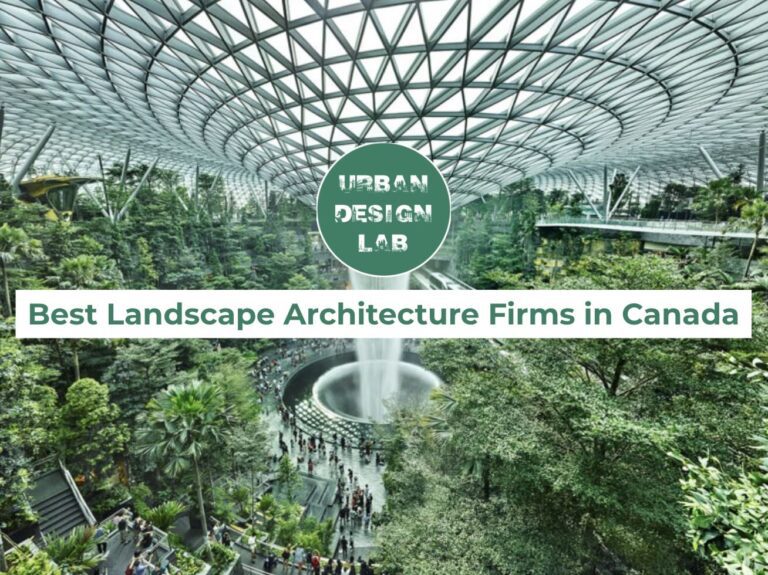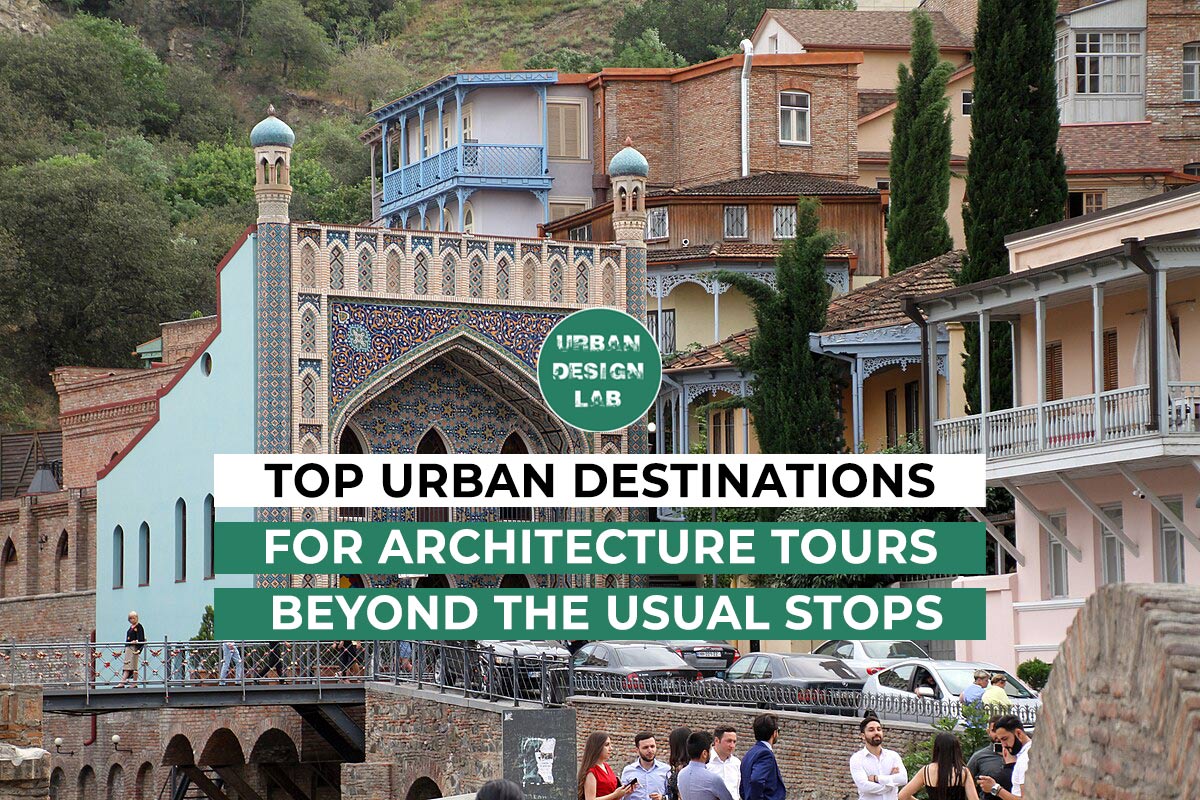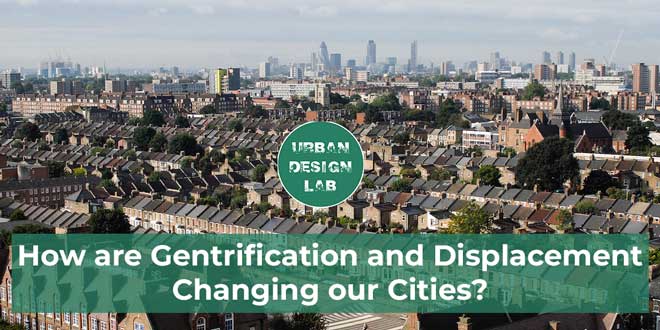
7 C’s of Urban Design

Urban design is a multifaceted discipline that involves the planning and designing of cities, towns, and other urban areas. It mixes art and science to produce habitats that are sustainable, visually beautiful, and functional for the people who live in them. Urban design, which takes into account the requirements and preferences of those who live, work, and play in these spaces, is essential in determining the quality of life in urban settings.
Seven crucial design characteristics that are required to good urban design are listed in the New Zealand-developed Urban Design Protocol. Context, character, choice, connections, creativity, stewardship, and cooperation are the seven characteristics of urban design, commonly referred to as the “7 Cs of urban design.” Each of these characteristics is very important in determining how urban places are designed.

1. Context
Urban design must consider context in order to create structures, locations, and spaces that are harmonious with their surroundings. In order to make sure the design is suitable for the site, it requires taking into account the area’s current physical, social, and cultural context.
Contextual urban design requires an understanding of the unique character and identity of the surrounding area. It involves taking into consideration the history, culture, and traditions of the community and designing in a way that respects and enhances these features.
The High Line in New York City is a fantastic illustration of contextually suitable design. The former railway line on which the park is situated served as inspiration for the design of the park, which incorporates elements like steel beams and railway tracks. The park has grown in popularity as a destination for both locals and visitors, and it has contributed to the neighborhood’s transformation.
The Casco Viejo neighbourhood in Panama City is yet another outstanding illustration of contextually suitable urban planning. The area, which serves as the city’s historical core, was named a UNESCO World Heritage Site in 1997. After being constructed in the 17th century, the neighbourhood has gone through numerous stages of growth, including restoration initiatives in the 20th century. With its small alleyways, brilliant colours, and elaborate balconies, the district’s present urban design preserves its historic character and individuality. The neighbourhood has grown to be a well-liked tourist destination and a thriving neighbourhood, demonstrating the advantages of contextually sensible urban planning.


2. Character
In urban design, character refers to capturing a place’s spirit and developing its distinctive identity. The objective is to design spaces that not only serve a practical purpose but also honour the region’s history and cultural heritage.
Barcelona, Spain, is a fantastic example of this. Barcelona is renowned for its spectacular architecture, including several of Antoni Gaud’s original and ground-breaking creations. While allowing for modern construction that respects the city’s identity, the city’s urban design ordinance emphasises the preservation of historic buildings. For instance, the Plaça de les Glries Catalanes project, which has a park, a library, and other public amenities, is intended to both commemorate the region’s industrial background and offer contemporary amenities for the community.
Edinburgh, Scotland, is a fantastic example of character-driven urban planning. The Old Town of the city is well-known and a UNESCO World Heritage Site. Narrow streets and buildings with distinctive architectural features define the neighbourhood. According to the city’s urban design guidelines, every new construction in the region must be planned to blend in with the neighborhood’s existing structures and maintain the neighborhood’s historic feel. For instance, the 2004-completed Scottish Parliament Building was planned to both represent the distinctive character of the city and incorporate contemporary design aspects.


3. Choice
The provision of diversity and choices for people to live, work, and play in urban settings is emphasised by the third “C” of urban design, or choice. Cities may become more livable, equitable, and sustainable by providing a variety of options for transportation, housing, and recreation.
Vancouver, Canada, is one instance of a city that places a high value on choice. Vancouver is renowned for offering a wide variety of housing alternatives, from single-family homes to townhouses and high-rise apartments. Additionally, the city has made investments in public transit, including as buses, trains, and ferries, giving locals a range of options for getting around. Vancouver also features a vast network of parks and green spaces, providing a variety of leisure choices for citizens of all ages.

4. Connections
Connections are an essential aspect of urban design, and they involve improving the movement of people and goods throughout the city. Creating designs that make it simple for people to access necessary services, such as transportation, healthcare, and education, is one of the most effective methods to improve connections.
An excellent example of enhancing connections through urban design is the Cheonggyecheon Stream in Seoul, South Korea. The Cheonggyecheon Stream was once a polluted, neglected waterway that ran through the heart of the city. In the early 2000s, the city government decided to transform the stream into a public space that would improve transportation and connect different parts of the city.
The stream was daylighted, which means it was uncovered and restored to its natural state. A pedestrian walkway was built along the stream, and the area around it was transformed into a park with benches, lighting, and artwork. The project has not only enhanced connections between different parts of the city but has also improved the local environment, making the area more attractive for residents and visitors.

5. Creativity
Creativity is a crucial element in urban design that encourages innovative and imaginative solutions to design challenges. It involves thinking outside the box and exploring new and creative ideas for urban design. Creative designs can help to inspire people and create a sense of community pride.
The Lotus Temple in Delhi, India, is a wonderful illustration of imaginative urban planning. The temple is made of white marble and has a lotus blossom shape. The Baha’i faith, which emphasises the similarity of all religions, served as inspiration for the temple’s design. Both tourists and residents like visiting the temple, and its popularity has aided in fostering a sense of local pride.
The Kunsthaus Graz Museum in Austria is yet another superb illustration of imaginative urban planning. The museum has a distinctive, cutting-edge design with a biomorphic shape like an amoeba. In addition to reflecting the museum’s emphasis on modern art, the architecture aimed to forge a link between the institution and the neighbourhood city.
The Kunsthaus Graz Museum has become an iconic landmark in the city and has attracted many visitors from around the world. The museum’s design has helped to revitalize the surrounding area, which was previously an industrial wasteland. The museum has become a hub for cultural activities in the city and has contributed to the city’s reputation as a hub for contemporary art.


6. Custodianship
The environment, as well as the health and safety of urban communities, are greatly influenced by urban planning. Custodianship is a crucial component of urban design, which entails planning in a way that is safe, secure, and healthy for everyone.
An excellent example of urban design that prioritizes custodianship is the green roofs of Chicago. In 2004, the city passed a law requiring new buildings with a roof area of more than 2,500 square feet to have at least 20% of their roof area covered in vegetation. Green roofs provide a variety of environmental benefits, including reducing the urban heat island effect and improving air and water quality.

7. Collaboration
In order to create the best possible settings for city dwellers, urban planners and designers must work together with a wide range of constituencies. When people from different fields and areas work together, everyone benefits from more communication and a greater pool of available expertise.
An excellent example of collaboration in urban design is the revitalization of the Berczy Park in Toronto. The project involved working with the local community and stakeholders to create a park that would meet the needs of the local community while preserving the park’s historic character. The revitalized park includes a central fountain that features 27 cast iron dogs that spit water into the fountain, which has become a popular attraction for locals and tourists alike.

Conclusion
Urban design plays a critical role in shaping the built environment and ensuring that our towns and cities work for all of us, both now and in the future. The seven Cs of urban design provide a framework for creating quality urban environments that are context-sensitive, enhance the character and heritage of our urban areas, provide choice and diversity, enhance connections, encourage creativity and innovation, prioritize custodianship, and involve collaboration across sectors, professions, and with communities.
Through a variety of case studies and examples, we can see how the seven Cs of urban design have been put into practice in cities around the world, creating vibrant, livable, and sustainable urban environments that meet the needs of all members of the community.

Urban Design Lab
About the Author
This is the admin account of Urban Design Lab. This account publishes articles written by team members, contributions from guest writers, and other occasional submissions. Please feel free to contact us if you have any questions or comments.
Related articles


Architecture Professional Degree Delisting: Explained

Periodic Table for Urban Design and Planning Elements


History of Urban Planning in India

Best Landscape Architecture Firms in Canada
UDL Illustrator
Masterclass
Visualising Urban and Architecture Diagrams
Session Dates
17th-18th January 2026

Urban Design Lab
Be the part of our Network
Stay updated on workshops, design tools, and calls for collaboration
Curating the best graduate thesis project globally!

Free E-Book
From thesis to Portfolio
A Guide to Convert Academic Work into a Professional Portfolio”
Recent Posts
- Article Posted:
- Article Posted:
- Article Posted:
- Article Posted:
- Article Posted:
- Article Posted:
- Article Posted:
- Article Posted:
- Article Posted:
- Article Posted:
Sign up for our Newsletter
“Let’s explore the new avenues of Urban environment together “










































